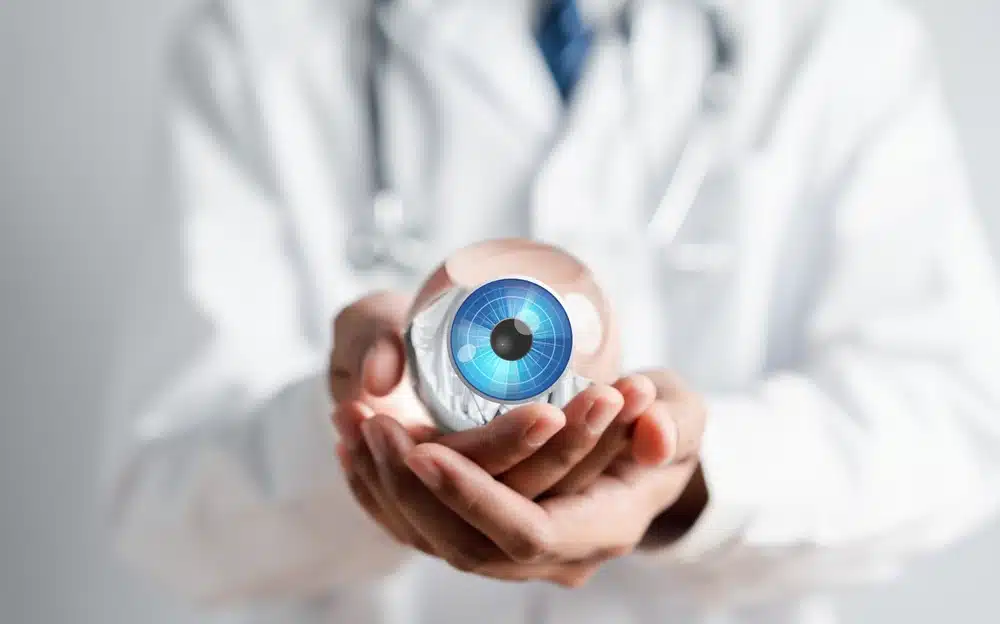Discovering the State-of-the-Art Technologies Made Use Of for Identifying and Dealing With Eye Conditions
In the realm of ophthalmology, the development of modern technology has significantly boosted the tools readily available for identifying and dealing with different eye problems. From innovative imaging technologies that offer comprehensive understandings into eye structures to robotic-assisted medical treatments that supply exceptional precision, the landscape of eye care is continuously evolving. With the integration of expert system in diagnostics, genetics therapy technologies, and virtual fact rehabilitation, the opportunities for improving patient outcomes are expanding at a fast pace. The convergence of these innovative innovations holds the assurance of transforming the field of ophthalmology, supplying new methods for individualized and efficient therapies.

Advanced Imaging Technologies
Advanced Imaging Technologies have actually changed the field of ophthalmology by giving specific and comprehensive visualization of the eye frameworks. Optical Coherence Tomography (OCT) attracts attention as an essential modern technology in this realm. OCT uses light waves to record high-resolution cross-sectional pictures of the retina, enabling the identification of minute architectural adjustments. This non-invasive technique help in the very early detection and tracking of different eye problems such as macular degeneration, diabetic person retinopathy, and glaucoma.
Moreover, Fundus Digital photography is another essential tool in sensory imaging. This strategy entails capturing comprehensive pictures of the rear of the eye, consisting of the retina and optic disc. Fundus Digital photography aids in recording the progression of eye illness, reviewing therapy efficiency, and educating patients concerning their eye wellness.

Robotic-Assisted Operation
Robotic-assisted medical treatments have actually significantly advanced the capabilities of sensory surgical treatment, introducing a brand-new age of accuracy and performance in treating various eye conditions. By incorporating robot technology into medical treatments, eye doctors can attain unparalleled accuracy and control, leading to improved client results.
One of the primary benefits of robotic-assisted surgery in ophthalmology is the boosted mastery and security it uses to specialists. The robotic arms can perform precise activities with a high level of precision, enabling for delicate procedures with marginal invasiveness. This degree of precision is particularly advantageous in surgeries entailing the retina, where also small mistakes can have considerable implications for a patient's vision.
In addition, robotic-assisted surgical systems provide real-time imaging and responses to the doctor, enabling them to make informed choices during the procedure. This technology boosts the specialist's situational awareness and permits for modifications to be made quickly, ensuring ideal results for the person.
Expert System in Diagnostics
With the evolution of innovative modern technologies improving medical precision in ocular procedures, the assimilation of Expert system in diagnostics has actually emerged as a crucial advancement changing the field of eye care. Fabricated Intelligence (AI) formulas are being increasingly used to assess complicated information from imaging technologies like optical comprehensibility tomography (OCT) and fundus digital photography to help in the very early discovery and exact diagnosis of different eye problems. These AI systems can efficiently determine patterns and abnormalities in images that may not be noticeable to the human eye, enabling quicker diagnosis and therapy preparation.
AI formulas can additionally anticipate disease development, suggest tailored therapy strategies, and evaluate the effectiveness of interventions. By enhancing browse around here the analysis procedure, AI not just boosts the performance of eye treatment specialists yet additionally boosts person end results by enabling timely interventions. As AI continues to advance, its role in diagnostics is anticipated to increase, supplying brand-new opportunities for very early intervention and customized treatment in the field of ophthalmology.
Genetics Therapy Technologies
In the world of ocular advancements, recent strides in genetics treatment advancements have sparked significant interest amongst scientists and medical care specialists alike. Genetics therapy holds immense assurance in changing the therapy of various eye problems by targeting the hidden hereditary reasons. By introducing hereditary product into cells to make up for uncommon genes or to offer an absent genetics, gene treatment provides a customized technique to dealing with inherited eye problems such as retinitis pigmentosa, Leber hereditary amaurosis, and others that were formerly thought about untreatable.

As research in genetics treatment remains to advancement, the potential for customized therapies for a larger variety of eye problems expands, providing new wish for clients with genetic eye conditions.
Digital Fact Rehab
Virtual fact rehab has become an innovative method in boosting the healing and rehabilitation procedures for individuals with numerous visual disabilities. refractive surgeries in al. By simulating real-world settings with immersive modern technology, online fact uses an unique system for vision therapy and rehab. This innovative technique enables people to participate in interactive exercises and activities created to boost aesthetic acuity, depth understanding, eye coordination, and total visual functioning
One trick advantage of online fact rehabilitation is its capability to customize treatment programs based upon the specific requirements and capacities of each patient. With real-time responses and monitoring, health care specialists can track progress, change treatments, and provide customized treatment to maximize outcomes. Furthermore, digital fact technology can produce a regulated and safe space for individuals to exercise aesthetic jobs, overcome challenges, and develop self-confidence in a digital setup prior to transitioning to real-world scenarios.
Conclusion
In conclusion, the improvements in imaging modern technologies, robotic-assisted surgical procedures, expert system diagnostics, gene therapy developments, and online truth rehab have substantially enhanced the medical diagnosis and see this here therapy of eye problems. refractive surgeries in al. These state-of-the-art technologies have actually changed the area of ophthalmology, enabling even more effective and precise procedures. As technology continues to evolve, the future of eye treatment looks encouraging with the capacity for a lot more innovative solutions to improve person end results
In the realm of ophthalmology, the evolution of technology has actually dramatically Get More Information improved the tools available for detecting and dealing with different eye conditions. Fundus Digital photography helps in documenting the development of eye illness, assessing treatment efficiency, and informing patients concerning their eye health and wellness.
Synthetic Knowledge (AI) formulas are being increasingly made use of to examine complex information from imaging modern technologies like optical coherence tomography (OCT) and fundus digital photography to help in the early discovery and accurate medical diagnosis of different eye problems.In final thought, the advancements in imaging modern technologies, robotic-assisted surgical treatments, artificial knowledge diagnostics, gene treatment innovations, and digital reality rehab have substantially improved the medical diagnosis and treatment of eye conditions. As modern technology continues to advance, the future of eye care looks appealing with the potential for even more cutting-edge options to improve individual outcomes.